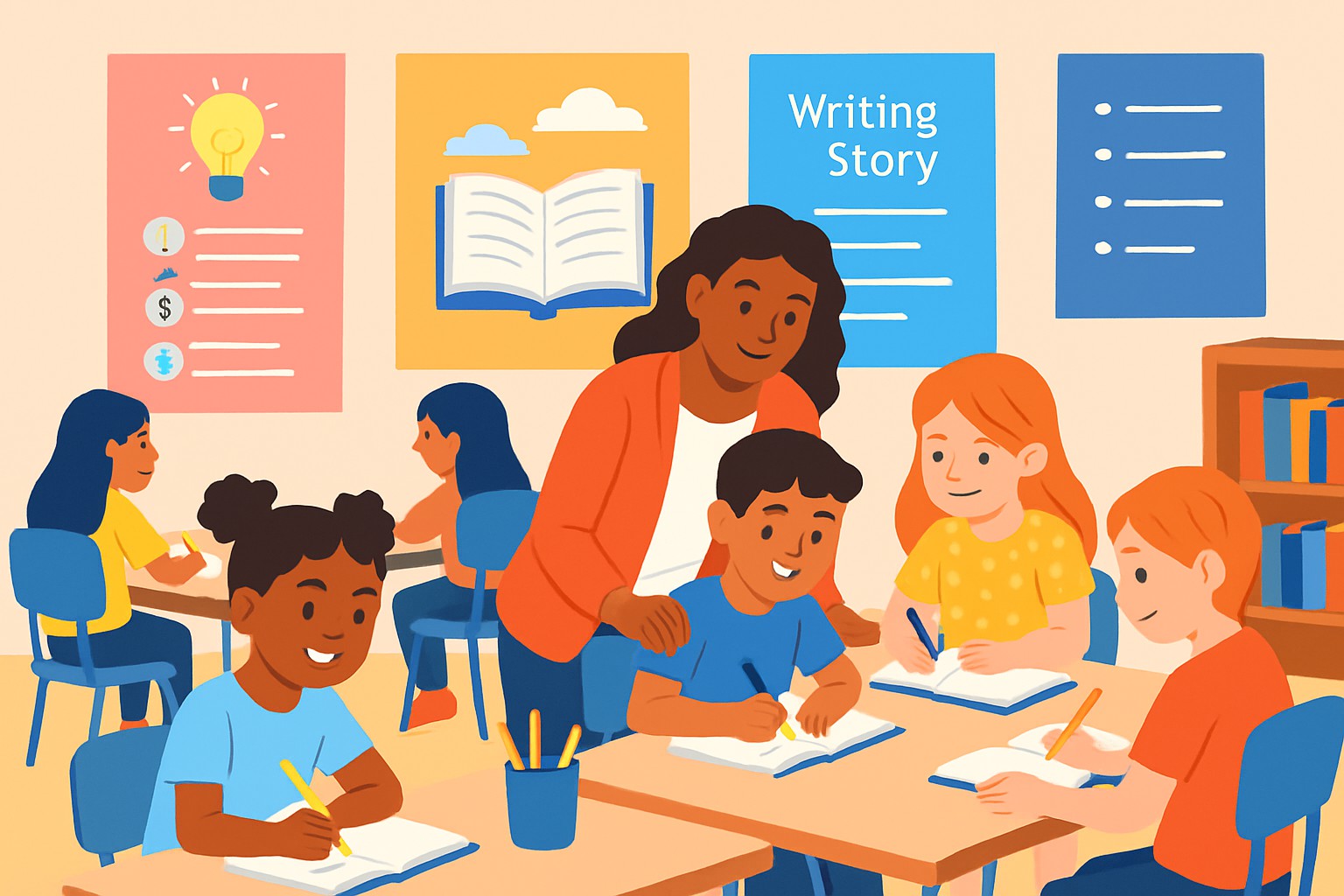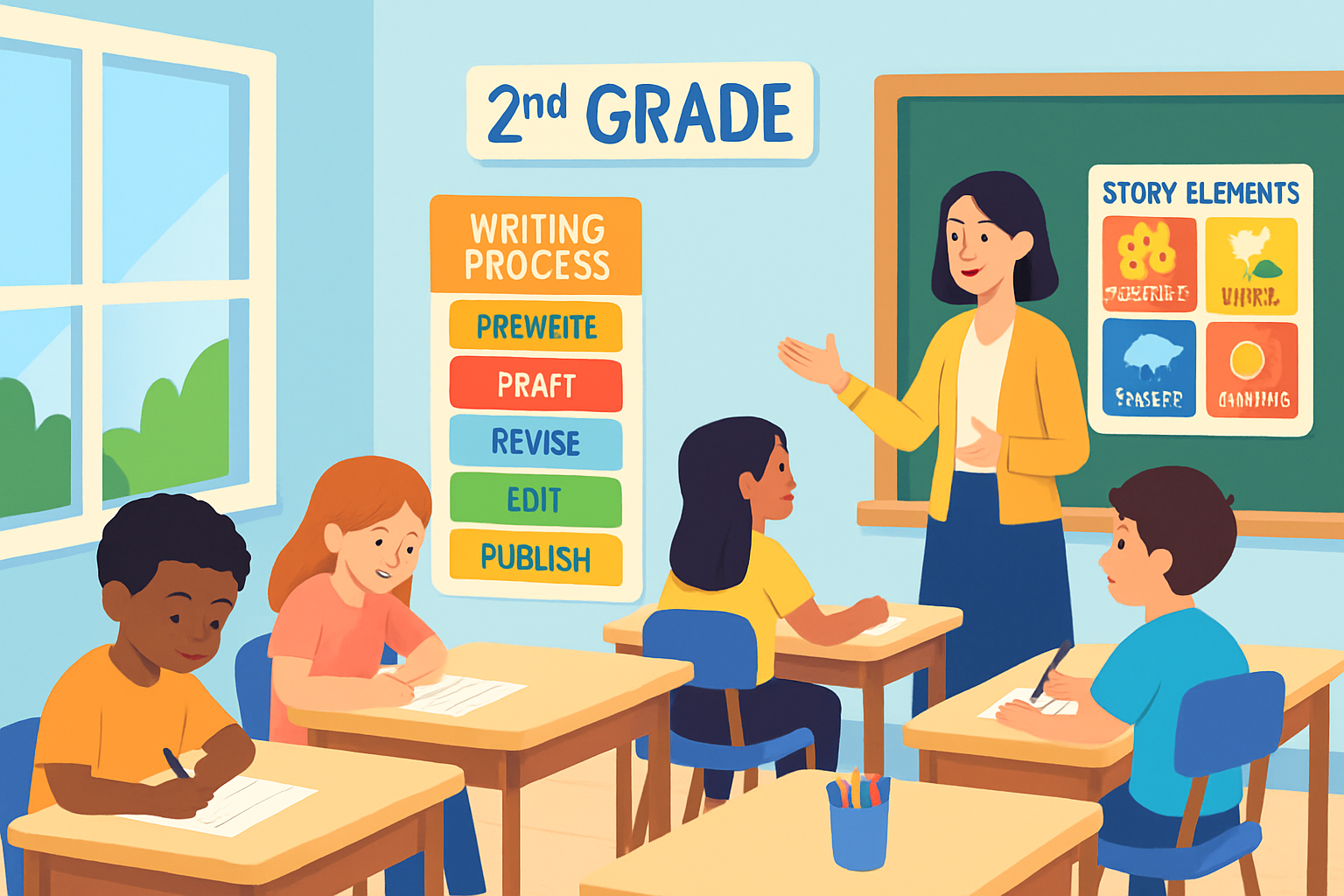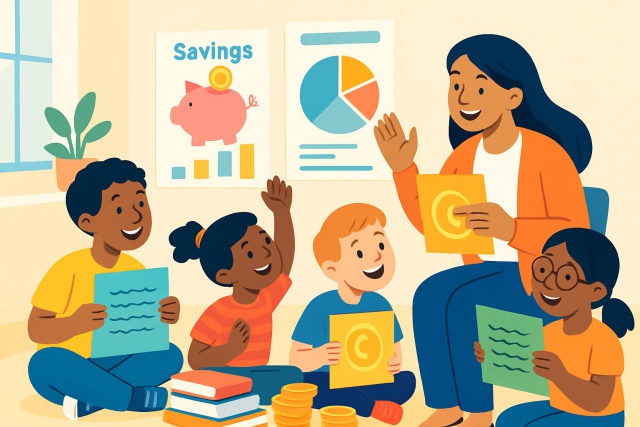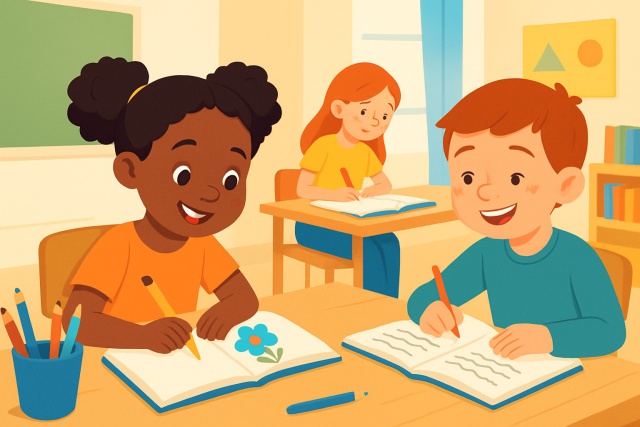Writers Workshop for 2nd Grade - Success Strategies for Teachers

The writers workshop 2nd grade model offers a straightforward and flexible approach to nurturing young students as they find their footing in writing. It blends mini-lessons and guided practice with personalized feedback that tunes into each child's unique needs.
Getting to Know Writers Workshop in 2nd Grade A Friendly Introduction
Writers workshop really puts students front and center in their learning journey and gently nudges young writers to dive into authentic meaningful writing activities. By the time kids hit 2nd grade, it’s perfectly in tune with where they’re at developmentally and focuses on building solid foundational writing skills alongside encouraging their personal flair.
- All designed to keep things lively and engaging.
- Typically show noticeable growth in vocabulary and sentence structure and their knack for telling stories with more spark and expression.
- Providing focused instruction and personalized support that meets each student where they are.
- Putting a clear emphasis on narrative and informational texts.
Creating the Right Environment for a Successful Writers Workshop
Setting the stage for a writers workshop that truly clicks is an art in itself. It’s not just about gathering people and hoping the magic happens—no, it’s about crafting a space where creativity feels welcome and every voice can find its rhythm. From the lighting right down to the seating arrangement, each detail plays a subtle but vital role in getting those ideas flowing and keeping the energy up throughout the session.
Creating a warm and well-organized classroom sets the stage for young writers to stay focused and inspired. When materials are within arm's reach and visual aids are thoughtfully displayed, writing spaces feel inviting. Students are more likely to stay engaged and gradually build their independence as they dive into their writing.
Carve out a dedicated writing nook with cozy seating and plenty of natural light—a peaceful setting can work wonders when creative juices need to flow.
Keep essentials like pencils, erasers, crayons and notebooks organized and within arm's reach in clearly labeled bins because hunting for supplies mid-lesson is never fun.
Create themed writing centers that focus on storytelling, research or poetry so students can hop between them depending on their writing mood or task at hand.
Establish clear classroom routines that guide students from mini-lessons to writing time and then on to sharing. This helps the day feel like a well-oiled machine.
Use anchor charts and vocabulary walls as trusty visual sidekicks to support and inspire students’ writing development without overwhelming them.
Organizing and Planning the 2nd Grade Writers Workshop with a Hands-On Approach
A well-run writers workshop is like a finely tuned machine—it smoothly blends teaching, independent writing and reflection to really boost learning. Usually sessions kick off with a quick laser-focused mini-lesson then shift gears into writing time where teachers catch up one-on-one with students.
- Mini-lessons deliver bite-sized bursts of specific writing strategies or skills packed into focused sessions that last just 10 to 15 minutes—short enough to keep attention sharp and rich enough to make a difference.
- Independent writing time gives students the chance to roll up their sleeves and put what they have picked up into practice. It often leads to genuinely creative and surprising work.
- Teacher-student conferences provide priceless one-on-one time where support feels personal and setting individual goals becomes a collaborative motivating experience.
- Peer sharing sessions open the floor for students to read their work aloud, which builds confidence and invites thoughtful sometimes eye-opening feedback from classmates.
- Reflection activities gently nudge students to pause and take stock of their progress, helping them figure out where they have been and plan where they want to go next.
Helpful Mini-Lessons for 2nd Grade Writers That Really Click
Mini-lessons should be short and sweet, grabbing 2nd graders' attention with a focus on specific skills that really click for their age. Tossing in hands-on examples and clear, bite-sized goals helps teachers keep kids engaged.
- Teach the essential parts of narrative writing: the beginning that hooks your reader, the middle where the story unfolds and the satisfying end.
- Help reinforce sentence structure by keeping a keen eye on capitalization and spacing because even small slips can throw off the flow.
- Introduce basic punctuation marks like periods, question marks and exclamation points, tiny heroes that bring sentences to life.
- Encourage stronger word choices by weaving in descriptive adjectives and verbs that make the story pop.
- Guide students patiently through each step of the writing process: planning, drafting, revising and publishing and make sure they don’t miss a beat along the way.
Supporting Independent Writing Time Helping Kids Find Their Own Voice
Independent writing time offers students a golden opportunity to put their freshly learned skills into practice and express their own ideas with genuine openness. Teachers have the tricky task of striking just the right balance—offering enough support to keep things on track, but stepping back enough to let independence flourish.
Personalized Feedback and a Helping Hand in Conferencing
Writing conferences offer valuable one-on-one moments where teachers can tune in to how students are doing and provide tailored support and encouragement. When handled thoughtfully, these conferences do more than assess progress—they build trust, highlight strengths and goals, and nurture a positive sense of identity as young writers.
Gather notes on each student’s past work and progress before the conferences. Having this info handy can really make the conversation flow smoothly.
Ask open-ended, guiding questions to truly understand their thinking and writing choices because it’s like opening a window into their creative process.
Offer positive feedback paired with thoughtful and specific suggestions for improvement. This helps keep motivation high without glossing over areas that need work.
Collaborate with students to set clear and achievable writing goals. It’s always better when they’re part of the goal-setting journey.
Keep a tracking system in place to monitor growth and steer future teaching plans since it’s a game changer for staying on top of progress.
"One-on-one conferences truly give young writers a genuine sense of their own voice and often light a spark of real passion for storytelling that you don’t easily forget." – Literacy Coach, Susan Miller
Encouraging Peer Sharing and Team Collaboration to Make the Magic Happen Together
Peer sharing is a great way to foster a supportive writing community and really gets those critical thinking muscles working. When expectations are laid out clearly and formats stay neat and tidy, students usually step up to give—and graciously receive—respectful feedback.
- Encourage getting comfortable with giving respectful and constructive feedback before peer sessions. Think of it as warming up your critical thinking muscles.
- Set clear goals and ground rules for feedback to keep it positive and genuinely helpful so everyone leaves feeling better and not bruised.
- Mix things up with different sharing formats like partnering up or small groups or whole-class circles because variety keeps the energy fresh and minds engaged.
- Make sure to recognize and celebrate the wide range of voices and writing styles in the room. This is a great way to foster inclusivity and boost everyone’s confidence without exceptions.
Approaches to Assessment in the Writers Workshop
When assessing writing in a workshop, there is an art to being thorough without overwhelming. Feedback should feel like a helpful, friendly nudge rather than a harsh critique. We rely on methods that balance detailed insights with big-picture perspectives, allowing writers to grow without feeling confined. It is like tending a garden: focusing on the small details while watching the overall bloom.
Assessment in the 2nd grade writers workshop blends formative and summative methods in a way that clicks with workshop practices. Formative assessments like writing samples and checklists play a key role in guiding day-to-day teaching—they are gentle nudges along the way. Summative assessments track overall growth and skill development over time by capturing the bigger picture.
| Assessment Type | Purpose | Examples | Frequency |
|---|---|---|---|
| Formative | To keep a finger on the pulse of progress and steer teaching in the right direction | Writing samples, checklists | Weekly or every couple of weeks |
| Conferencing Notes | To offer tailored feedback and keep a close eye on student goals | Conference logs, anecdotal notes | Each conference cycle |
| Peer Feedback | To spark critical thinking and build social skills through collaboration | Peer review sheets, rubrics | Weekly or during sharing time |
| Portfolios | To collect pieces that showcase and reflect on student growth | Compiled drafts and published pieces | At the end of a unit or term |
| Summative | To check mastery and overall writing development, the big picture stuff | Writing prompts or final projects | End of term or school year |
Keeping writing portfolios nicely organized not only makes it easier to track student progress but also shines a spotlight on their best work. Using simple rubrics designed just for young writers helps set clear expectations and ensures a fair, consistent assessment.
Getting the Family and Community Onboard with Writers Workshop
Bringing families and community members into the writers workshop process often gives students a real boost in motivation and helps keep the learning vibe going well beyond the classroom walls. When kids share their work and dive into writing activities at home, families get a much clearer picture of what their child is up to and can lend a hand in nurturing that writing growth.
- Organize cozy family writing evenings where students proudly share their work and parents join in fun writing activities.
- Send home simple writing prompts or journals to encourage practice with a nudge and cheer from the family.
- Use newsletters or online platforms to spread the word about writing goals and handy tips and celebrate student achievements—they deserve some spotlight.
- Invite guest readers or local writers from the community to spark inspiration and offer fresh perspectives.
Frequent Challenges and Handy Strategies in the 2nd Grade Writers Workshop
Teachers often face challenges like handling a range of writing abilities and keeping young learners from drifting off mid-lesson. They also need to nudge students past the dreaded writer’s block. Tackling these hurdles usually means using flexible teaching styles and grabbing students' attention with creative resources. They come up with inventive ways to keep them motivated and boost their confidence.
Tailor lessons and assignments to fit each student's skill level like a glove, mixing things up to keep everyone from feeling stuck in a rut.
Weave in short, regular breaks and some movement—think quick stretches or a little wiggle—to help keep focus sharp and minds fresh.
Offer prompts and graphic organizers as friendly little lifelines when writer's block decides to pay a visit.
Cheer on a growth mindset by celebrating the effort and progress along the way, not just the final score—because every step forward counts.
Bring in technology tools to draw in those hesitant writers, giving them fresh and fun ways to share their ideas without feeling boxed in.
Technology Tools and Resources That Can Truly Give Your Writers Workshop a Boost
Digital tools tailored for 2nd graders can truly give writing instruction a nice little boost. They spark creativity and provide interactive feedback that feels less like a chore and more like a conversation. They also adapt to various learning styles, making writing not just easier but actually fun for those young minds.
- Word processing programs like Google Docs or Microsoft Word, trusty tools for getting your thoughts down and polishing them up.
- Story starter apps that nudge creativity into gear with fun, interactive ways to build stories from the ground up.
- Audio recording tools that let students speak their minds and bring their stories to life out loud.
- Visual organizers and mind mapping apps to help lay out the writing structure clearly—because sometimes a sketch says more than a thousand words.
- Collaborative platforms that make peer feedback and group writing tasks feel like a team effort rather than a solo slog.
Cultivating a Lasting Growth Mindset and Truly Falling in Love with Writing
Encouraging a lifelong passion for writing in young learners takes more than just handing out lessons—it's what makes a successful writers workshop for 2nd grade. It’s about gently stoking their curiosity and building grit while sparking the pure joy of expressing who they are. Teachers often play the role of cheerleaders for risk-taking by framing mistakes not as failures but as golden opportunities to learn. They introduce students to a colorful palette of writing styles and tie assignments to things that light up their world or resonate with everyday experiences. Weaving writing into different subjects and celebrating each student’s unique voice helps them see writing not just as homework but as a powerful tool for communication and creativity.
Early writing experiences don’t just shape students' skills; they also play a surprising role in building their confidence and the way they tackle lifelong learning and self-expression. It’s something I’ve noticed time and again. – Dr. Emily Rhodes, Child Literacy Expert






